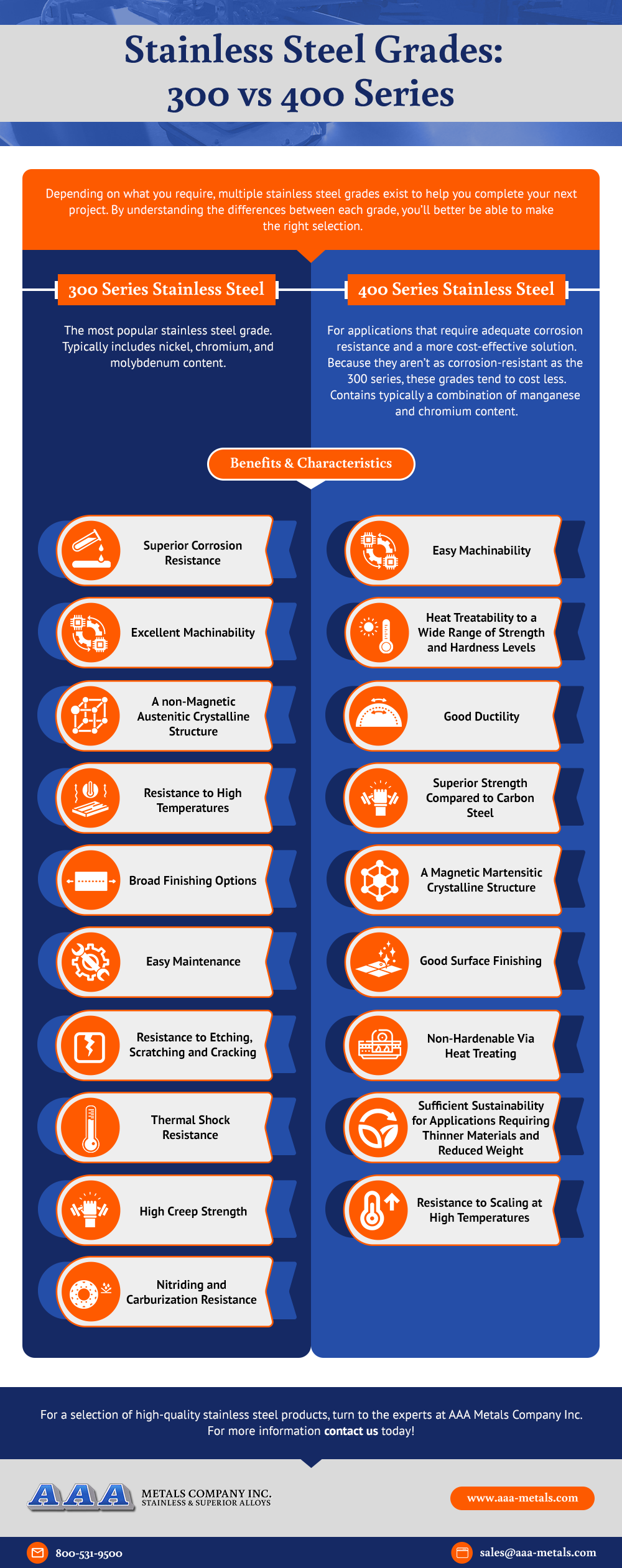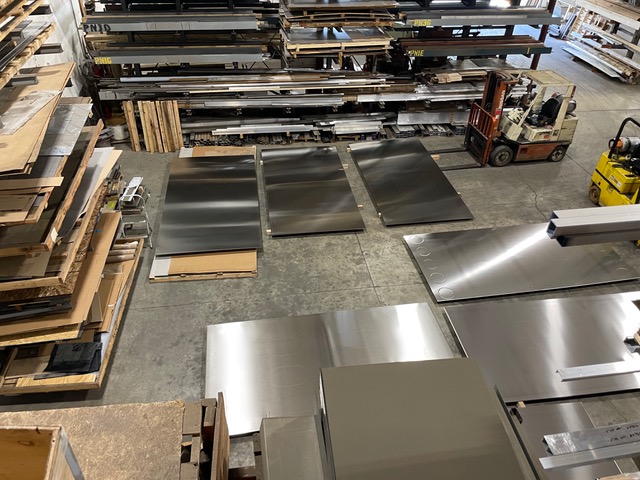If an application requires durable steel that’s designed to last, they’re likely to use stainless steel. Stainless steels are iron-based alloys that include a chromium content of at least 10.5% or higher. This level of chromium content facilitates the development of a passive chromium oxide layer on the steel’s surface, which allows for optimal corrosion resistance for every grade of stainless steel.
Stainless steel also tends to include other alloy content, including carbon, nickel, manganese, silicon, and molybdenum, each of which enhances certain stainless steel properties. Manufacturers often alloy stainless steel with these elements to increase stainless steel’s heat resistance, formability, and durability based on the needs of a particular application.
Depending on what you require, multiple grades exist to help you complete your next project. By understanding the differences between each grade, you’ll better be able to make the right selection.
300 Series Stainless Steel
The most popular stainless steel grade is the 300 series. 300 series stainless steels typically include nickel, chromium, and molybdenum content. They provide superior corrosion resistance, along with other benefits such as:
- Excellent machinability
- A non-magnetic austenitic crystalline structure
- Resistance to high temperatures
- Broad finishing options
- Easy maintenance
- Resistance to etching, scratching, and cracking
- Thermal shock resistance
- High creep strength
- Nitriding and carburization resistance
Each of the 300 series stainless steel grades features different properties. These grades include:
303
303 stainless steel is extremely machinable because of its phosphorus and sulfur content. Applications for this steel include fittings, bolts, gears, and nuts in the aerospace industry.
304
The majority of applications that use 300 series stainless steel use grade 304. The automotive, nuclear, food and beverage, and shipping industries often use this grade. Additionally, welding applications often use a variation called 304L, which features a reduced amount of carbon content.
316
Some applications use 316 stainless steel due to its excellent corrosion resistance, particularly to chlorides like seawater and salt. The increased nickel and molybdenum content allows for this superior corrosion resistance. 316L is a low-carbon variation of this steel. 316 stainless steel often appears in marine and nuclear environments, while the pharmaceutical and chemical industries frequently rely on 316L.
Applications for 300 series stainless steels include a variety of materials in the automotive, construction, and aerospace industries, among many others.
400 Series Stainless Steel
For applications that require adequate corrosion resistance and a more cost-effective solution, 400 series stainless steel grades are available. This series normally contains a combination of manganese and chromium content. While these grades are resistant to corrosion, they aren’t as corrosion-resistant as the 300 series. Because of this, these grades tend to cost less.
Some of the key characteristics of 400 series stainless steel grades include:
- Superior strength compared to carbon steel
- A magnetic martensitic crystalline structure
- Good surface finishing options
- Non-hardenable via heat treating
- Sufficient sustainability for applications requiring thinner materials and reduced weight
- Resistance to scaling at high temperatures
Additional benefits include easy machinability, heat treatability to a wide range of strength and hardness levels, and good ductility.
The two main grades of 400 series stainless steel include:
416
This stainless steel grade contains sulfur for increased machinability. The quality of 416 stainless steel makes it compatible with many applications, including pumps, gears, valves, studs, and washing machine parts.
440C
If applications need stainless steel with high resistance to wear and increased durability, 440C stainless steel is a popular option. However, it’s not as corrosion-resistant as other grades. Nozzles, surgical instruments, and bearings use 440C stainless steel, along with other items that require material to retain its shape.
Applications for 400 series stainless steel include machine components, medical implements, and other parts that require added machinability and strength.
Stainless Steel from AAA Metals
For a selection of high-quality stainless steel products, turn to the experts at AAA Metals Company Inc. Since 1978, we’ve developed into a leading supplier of raw materials, including plates, discs, rings, bars, and much more using stainless steel and other alloys.
If you would like additional information about our metal stock and services, contact us today. To get started on a project using stainless steel or other alloys, request a quote.


